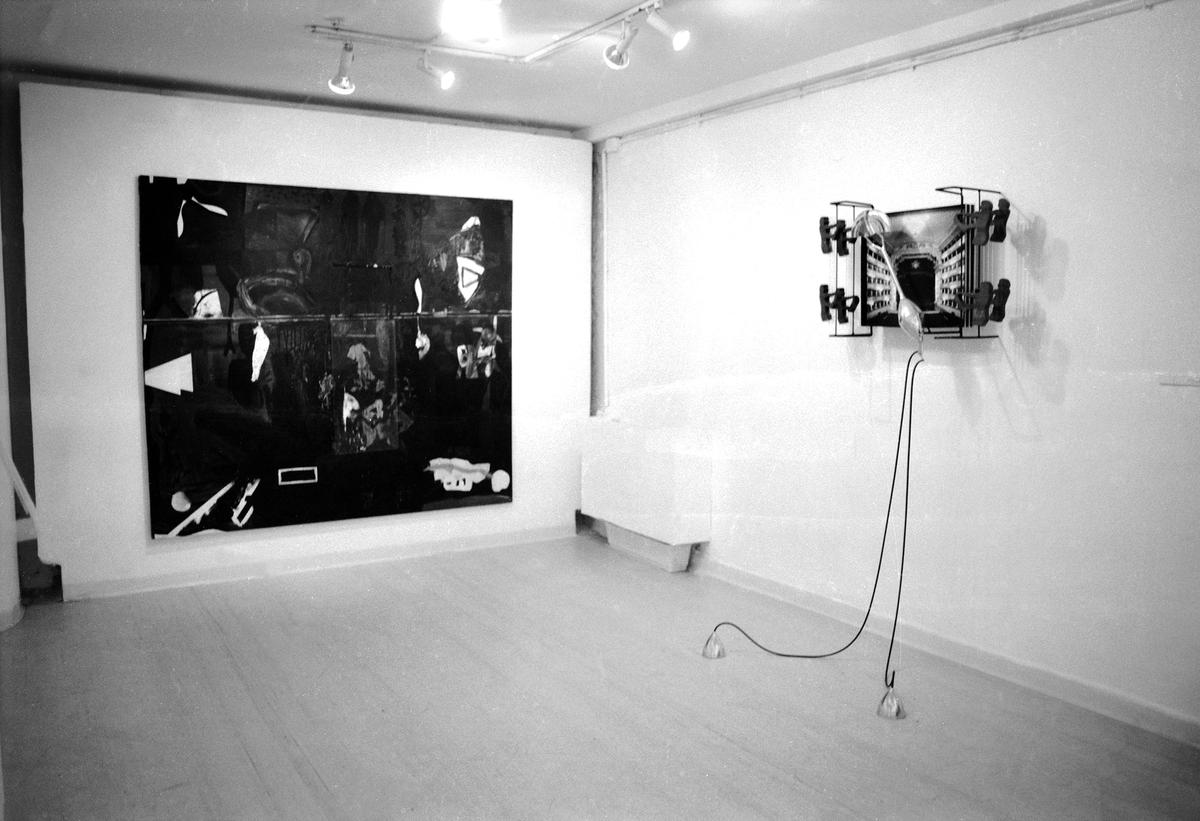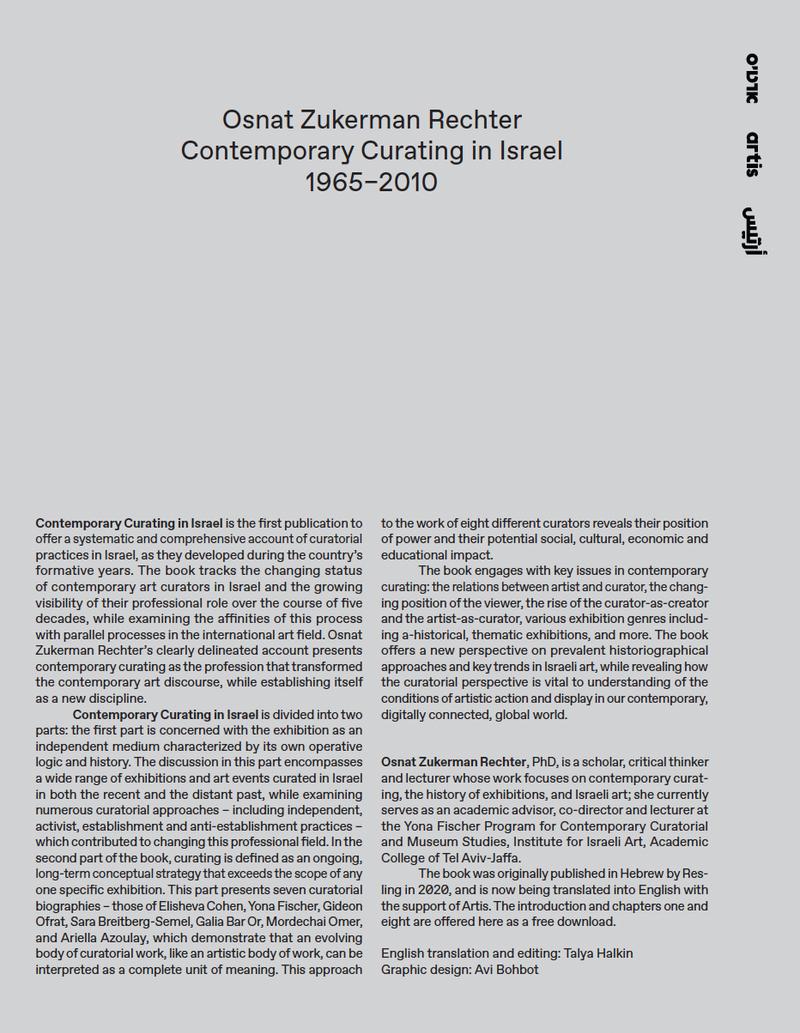
Introduction
Contemporary Curating in Israel is the first publication to offer a systematic and comprehensive account of curatorial practices in Israel, as they developed during the country’s formative years. The book tracks the changing status of contemporary art curators in Israel and the growing visibility of their professional role over the course of five decades, while examining the affinities of this process with parallel processes in the international art field. Osnat Zukerman Rechter’s clearly delineated account presents contemporary curating as the profession that transformed the contemporary art discourse, while establishing itself as a new discipline.
Contemporary Curating in Israel is divided into two parts: the first part is concerned with the exhibition as an independent medium characterized by its own operative logic and history. The discussion in this part encompasses a wide range of exhibitions and art events curated in Israel in both the recent and the distant past, while examining numerous curatorial approaches – including independent, activist, establishment and anti-establishment practices – which contributed to changing this professional field. In the second part of the book, curating is defined as an ongoing, long-term conceptual strategy that exceeds the scope of any one specific exhibition. This part presents seven curatorial biographies – those of Elisheva Cohen, Yona Fischer, Gideon Ofrat, Sara Breitberg-Semel, Galia Bar Or, Mordechai Omer, and Ariella Azoulay, which demonstrate that an evolving body of curatorial work, like an artistic body of work, can be interpreted as a complete unit of meaning. This approach to the work of eight different curators reveals their position of power and their potential social, cultural, economic and educational impact.
The book engages with key issues in contemporary curating: the relations between artist and curator, the changing position of the viewer, the rise of the curator-as-creator and the artist-as-curator, various exhibition genres including a-historical, thematic exhibitions, and more. The book offers a new perspective on prevalent historiographical approaches and key trends in Israeli art, while revealing how the curatorial perspective is vital to understanding of the conditions of artistic action and display in our contemporary, digitally connected, global world.
Osnat Zukerman Rechter, PhD, is a scholar, critical thinker and lecturer whose work focuses on contemporary curating, the history of exhibitions, and Israeli art; she currently serves as an academic advisor, co-director and lecturer at the Yona Fischer Program for Contemporary Curatorial and Museum Studies, Institute for Israeli Art, Academic College of Tel Aviv-Jaffa.
The book was originally published in Hebrew by Resling in 2020, and is now being translated into English with the support of Artis. The introduction and chapters one and eight are offered here as a free download.
English translation and editing: Talya Halkin
Graphic design: Avi Bohbot

Installation view of the exhibition, “The Boundaries of Language,” at the Tel Aviv Museum of Art, 1998. Photo: Avraham Hay.
Table of Contents
Introduction
Part I: A History of Exhibitions
1. 1965
2. New Curatorial Challenges (Late 1960s–Late 1970s)
3. A-Historical Thematic Exhibitions and Independent Curators (1977 – mid-1980s)
4. Focus on the Contemporary (Late 1980s–Late 1990s)
5. Exhibitions, Narratives of Identity, and Curatorial Power (Late 1990s–2010)
Part II: Curatorial Biographies
6. From Visibility to Over-Visibility – the Curator as Author: Elisheva Cohen: Between Curatorship and Connoisseurship; Yona Fischer: A Dialogue with the Now; Gideon Ofrat: Curatorial Performativity.
7. The Contemporary Curator as a Cultural Agent: Sara Breitberg-Semel: The Power of Rebellion; Galia Bar Or: Breaking the Rules Wholeheartedly.
8. From Institutional Power to Civil Power – A Tale of Two Curators: Mordechai Omer: The Grand Synthesis; Ariella Azoulay: The Exhibition as Resistance.
Epilogue

Installation view, “Space/Presentation/Power,” Bograshov Gallery, 1990. The Bride and the Echo (1990) by Sigal Primor (right) and Restoration (1986) by Michal Heiman (left). Photo: Michal Heiman.

Gideon Gechtman, Mary Beebe, 1990, PVC piping, 400 cm. “The Column in Contemporary Israeli Sculpture,” the Levi and Fortuna Eskenazi Sculpture Garden, The Genia Schreiber University Art Gallery, 1990. Photo: Avraham Hay.
Essays
The book’s introduction and chapters one and eight are offered here as a free download.

Download Essays